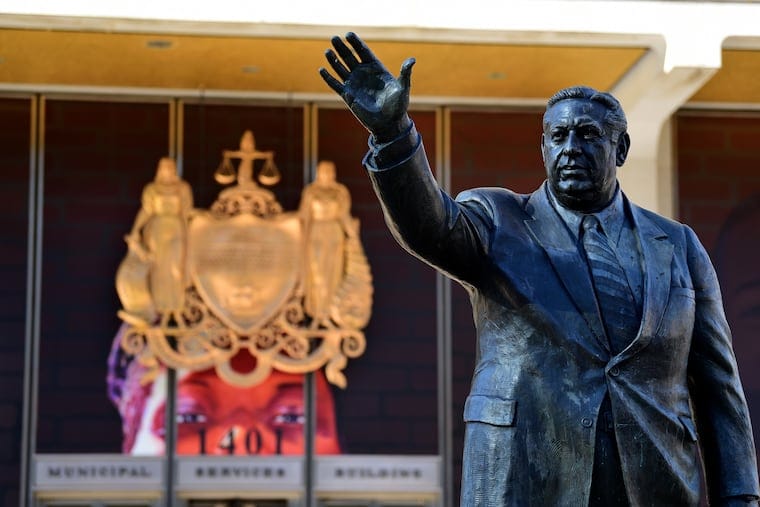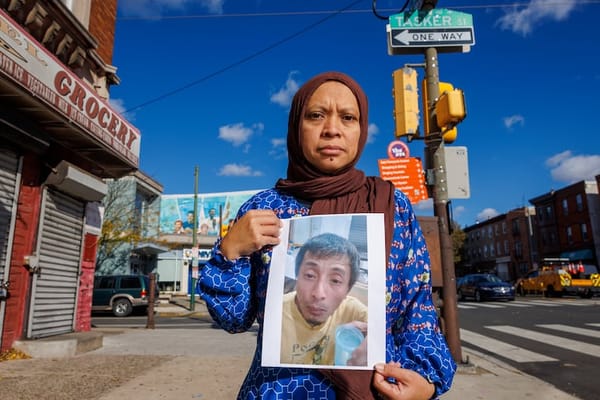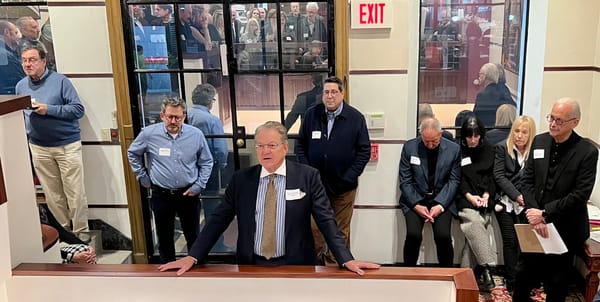What the Rizzo statue agreement really says
The statue can be placed on public land, but with stipulations

So what does the agreement between the City of Philadelphia, and the Frank L. Rizzo Monument Committee, actually say?
It does not say, as the Philadelphia Inquirer inaccurately reported, that the statue may be displayed only on private property “inside of a building or behind a fence, wall or other structure that makes the statue not visible from the public right of way.”
Yes, the agreement says that, but it is only half of settlement agreement point 4 ( c). That language is followed by this: “or (2) in a location that is 20 feet or more from any public right-of -way.”
Earlier language in the paragraph says “the statue may be displayed either (1) “inside a building. . . .” or (2) “20 feet or more from any public right-of-way.” It is an either/or proposition.
A later court order “absolutely“ does not overturn the injunction, it “merely trims certain counts,” says Bochetto.
The statue can be on public property.
There is an important stipulation. Point 4 (a) says the statue can be placed only on private property “unless a specific location is approved in writing by the mayor or managing director.”
So either Mayor Cherelle Parker or Managing Director Adam Thiel can approve a public location.
“The chapter is not closed on that,” said George “Statuesque” Bochetto, the attorney who represents the committee, and also the Rizzo statue, which was unlawfully removed by woke Mayor Jim Kenney, flexing authoritarian chops.
A later court order ”absolutely” did not overturn the injunction, said Bochetto. It “merely trims” certain counts, and he will soon amend FOPS law suit challenging the city’s new, and insane, no-stopping in bike lane law.
Bochetto is the crusading Center City lawyer who also beat two other awful Kenney legacies — overturning Kenney’s order to replace Columbus Day with Indigenous Peoples Day, and reversing Kenney’s order to box the statue of Christopher Columbus that stands in South Philly’s Marconi Plaza.
In each case, Kenney acted outside of his authority and was spanked in separate court orders.
In press reports, the Rizzo statue is often called a "source of tension.” Really? When did that start? It was erected in 1998, with virtually no controversy. It was unlawfully removed in June 2020.
There was no talking to the mule-headed Kenney, but Bochetto says the Parker administration is easier to work with.
My sources tell me Parker remains open to the statue possibly being placed on public property, such as a park, but the big question is where? And, honestly, she may punt to allow Thiel’s signature to be on any deal, because “backing” the Rizzo statue could hurt her politically with the Left.
It’s almost certain she will run for re-election, but what’s to worry? That she’ll be successfully challenged in the primary? It’s never happened. The general election? Philly’s astonishing Democratic 7-1 registration edge makes her re-election a lock. Incumbent Mayor Wilson Goode was easily re-elected after bombing a Philadelphia neighborhood. He even got a majority of the votes in the bombed precinct.
So where will it go?
That is a subject the Rizzo Monument Committee will discuss next week.
[Full disclosure: I am a member of the committee.]
Among the issues the committee faces is finding a location where the statue will be safe from the social justice vigilantes who defaced public property and tried to pull down the statue when it was located outside the Municipal Services Building.
Curiously, after Frank Rizzo’s death in 1991, Kenney talked about renaming MSB to honor Rizzo. Obviously, that was before he attended progressive reeducation camp.
The renaming MSB idea went away when it was learned that a number of prominent Philadelphians, including Mayor Ed Rendell, and District Attorney Lynne Abraham, began fundraising for a statue, which became the 10-foot bronze sculpted by artist Zenos Frudakis.
His beautiful artwork depicted the late mayor in a friendly wave to passersby, which Inquirer numbnut columnist Will Bunch, wearing his woke blinders, described as a fascist salute. As if the artist would do that. As if the committee would accept that.
And there the statue stood until being victimized by vandals — and a chicken-hearted mayor.



